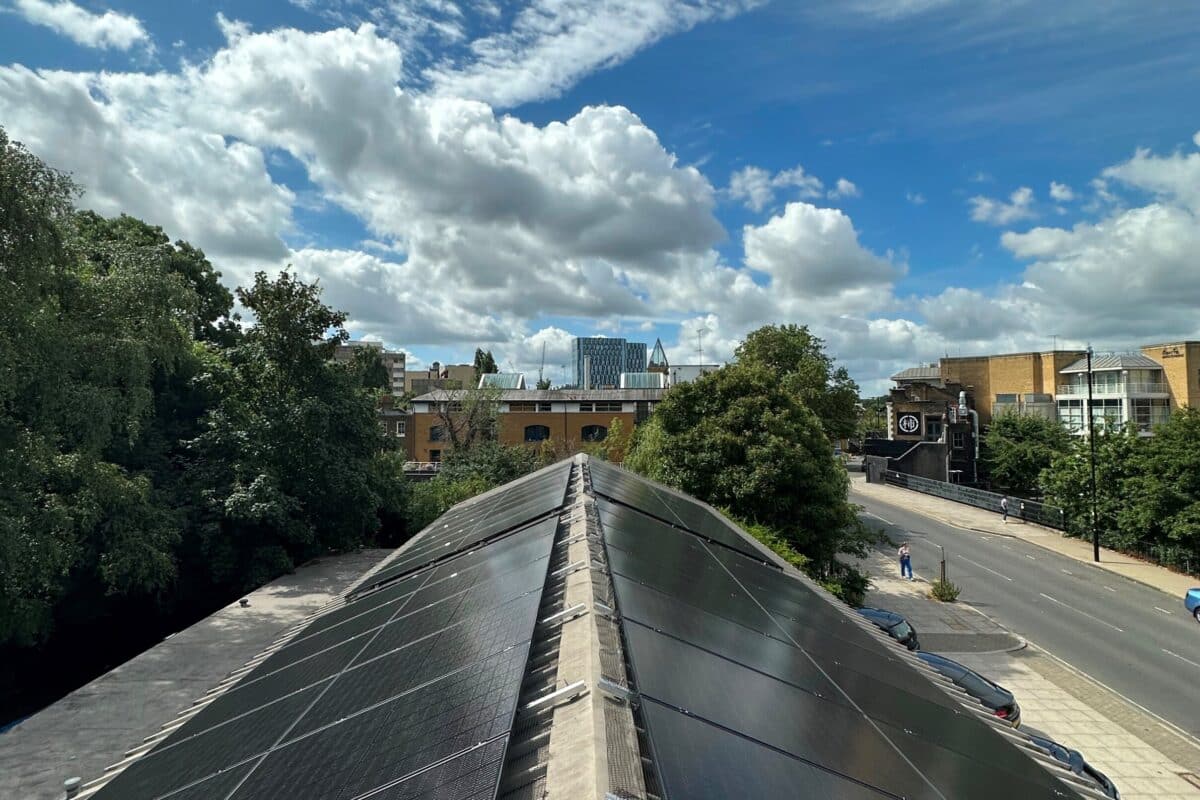Churches in the Diocese of London (together with their church halls) saved 29.1% of their energy use and 47.6% of their carbon emissions from 2005 to 2022.
Warm thanks to all the hard-working church staff and volunteers who have taken the time and trouble to enter their data into the Energy Footprint Tool.
The greenhouse gases we’re concerned about (CO2 and several others) are the main cause of global heating and climate change, which has become a very major crisis. We need to help tackle it, urgently.
The actual figures for 2022 were 57.1 million kilowatt-hours (kWh) of energy and 11,900 tonnes of net CO2e, which means the carbon dioxide equivalent of all greenhouse gases emitted from electricity, gas and oil used by our churches. These results have been calculated from returns submitted this year to the Church of England’s Energy Footprint Tool (EFT).
It’s also possible to compare 2022 with the previous year (2021). Like for like, the improvements in one year were 4.3% of energy use and 13.5% in net carbon emissions. The reason for the difference in these efficiencies is that emissions from the electricity grid are quickly reducing. Therefore there would be savings in CO2e, even if the energy use was the same. But in fact, churches are making steady savings in their energy use from year to year, adding to their savings in carbon emissions.
This is very encouraging, as the Diocese of London works towards the Church of England’s target of net zero carbon by 2030. Compared to 2005 (the first year the Diocese began measuring), our churches are nearly half way to net zero! From now on, we’re going to take 2021 as the base date for measuring savings towards net zero by 2030. So even one year from that baseline, measurable savings were made. 2023 will doubtless show further improvement.
Still, there’s a long way to go, but we have the encouragement of knowing that we’re heading in the right direction and picking up speed.
Of course, 11,900 tonnes of net CO2e is a lot of emissions still to get rid of, or else balance with green energy tariffs or electricity exported from solar panels on church roofs. That’s what net zero means. When we write ‘net zero carbon’ or ’net CO2e’ we mean the balance, the difference between emissions and savings from green energy. That balance needs to go down to effectively zero.
To get an idea of what 11,900 tonnes of CO2e looks like, it’s what we’re emitting from 490 churches and other places of worship in the Diocese. All of that CO2 and several other gases goes into the air. But it would be enough to fill 1,700 Olympic swimming pools with CO2! You read that right, it’s like 1,700 swimming pools full of CO2 emissions, just from energy used in our churches in one year!
That’s a sobering thought. No wonder we’re changing the climate. It’s causing harm to God’s creation, and a lot of suffering from extreme weather, floods, droughts and fires all over the world. That suffering bears mostly on the poor and vulnerable. That’s why we take net zero so seriously, to reduce the harm to people and to God’s creation, by striving to reach net zero carbon.
Many churches are getting close. We already have several churches in the Diocese that are effectively net zero. The closest we know of is Holy Trinity East Finchley at 0.2 tonnes CO2e (that’s ‘De Minimis’ – little enough not to worry about). This church has all electric light and heat (recently installed), and uses a 100% green tariff. Well done to Holy Trinity!
To read more:
Accidental zero: Jesus Church Enfield, Charis Centre
Practical path to net zero: Church of England
